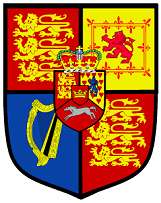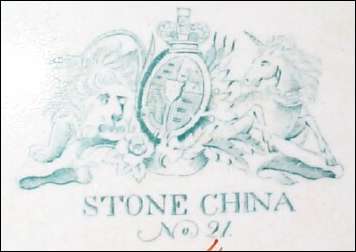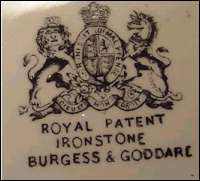| Stoke-on-Trent, England - home of the North Staffordshire Potteries |
|
|
| Index for Royal Coat of Arms on Pottery |
Change in the Royal Coat of Arms in 1837
![]()
![]()
![]()
previous: Meaning of the
Royal Coat of Arms
next: English potters using the Royal Arms
|
The arms have remained unchanged since 1837 when Queen Victoria came to the throne. Therefore it is possible to date pre and post 1837 pottery by these differences.
George III - From 1801 the arms of England occupied the first and
fourth quarters, the arms of Scotland the second, and the arms of
Ireland the third.
Victoria and all subsequent monarchs: In 1837, the Hanoverian escutcheon and crown were removed because Queen Victoria, as a woman, was unable to succeed to the throne of Hanover under Hanoverian law. The arms have remained unchanged since then.
| Index for Royal Coat of Arms on Pottery |
|
Questions, comments, contributions? email: Steve
Birks



